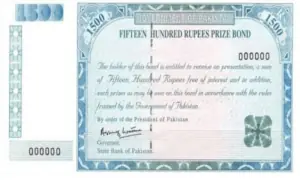IMF deal: Finance Ministry tightens grip on development funds despite planning ministry objections
The Ministry of Finance has decided to maintain tight control over federal financing for development and ongoing government expenditures. However, the Ministry of Planning objected to this plan.
They will do this by delaying the release of funds to meet the IMF’s primary surplus targets, even if it comes at a significant cost.
According to recent notifications from the Ministry of Finance, the Ministry of Planning, Development and Special Initiatives will only be authorized to release 15% of funds for approved development projects in the first quarter (July-September) of the current fiscal year. This will be followed by 20% in the second quarter (October-December), 25% in the third quarter (January-March), and 40% in the final quarter (April-June).
This approach is part of the government’s commitment under the new $7 billion IMF bailout package approved on Saturday. The government has promised the IMF that it will ensure an “underlying general government primary surplus of 1% of GDP (2% in headline terms)”.
In contrast, the previous PTI government had streamlined the budget release process to enable faster disbursements. They had implemented a mechanism that made half of the total annual allocations available to development projects in the first half of the fiscal year - 20% in the first quarter, followed by 30% each in the second and third quarters, and the remaining 20% in the last quarter.
Before the PTI government, the standard practice was to release 40% of development funds in the first six months - 20% each in the first and second quarters - and the remaining 60% in the second half of the fiscal year, at a rate of 30% per quarter, Dawn reported.
The planning division generally views that back-loaded fund disbursements negatively impact the pace of project implementation. Smaller releases in the early part of the year slow down development schemes and can lead to cost overruns.
In the past, a front-loaded disbursement mechanism was implemented to encourage early release of funds to executing agencies. This was intended to enable them to utilize the funds within the required timeframe.
Previously, the Planning Commission would authorize funds for development schemes based on the cash flow plans submitted by the executing agencies. However, the Ministry of Finance often withheld significant funds under the pretext of “ways and means clearance.” This was done to slow down disbursements for development projects in order to meet urgent requirements for current expenditures or other obligations. This practice was a key contributor to project delays and cost overruns.
Read more
Pakistan’s reliance on IMF to continue unless it boosts tax collection, warns Aurangzeb
Govt will look into traders concerns over budget, says Aurangzeb
No option but to tax agriculture and property: Aurangzeb
Due to the ongoing tensions between the finance and planning ministries, the disbursement mechanism was revised again in 2022. The planning division then specified that development funds allocated in the budget would be released in phases - 20% in the first quarter, 30% each in the second and third quarters, and the remaining 20% in the final quarter of each fiscal year.
However, the Ministry of Finance changed the policy once more last year. This was to ensure it could meet the primary cash surplus target committed to the IMF. As a result, development expenditures were cut by more than Rs230 billion, reducing the total from the budgeted Rs950 billion to around Rs727 billion by the end of the 2023-24 fiscal year.
The Ministry of Planning formally protested this decision to the Annual Plan Coordination Committee and National Economic Council early last month.
Recently, the Ministry of Finance has issued fresh instructions tightening control over fund disbursements. This is aimed at creating room for potential expenditure cuts during May-June, in case of any shortfalls in revenue collection.
Conversely, the release of recurrent budgets to various government entities will be phased differently - 20% in the first quarter, 25% each in the second and third quarters, and 30% in the fourth quarter of the current fiscal year.
For the latest news, follow us on Twitter @Aaj_Urdu. We are also on Facebook, Instagram and YouTube.




















Comments are closed on this story.